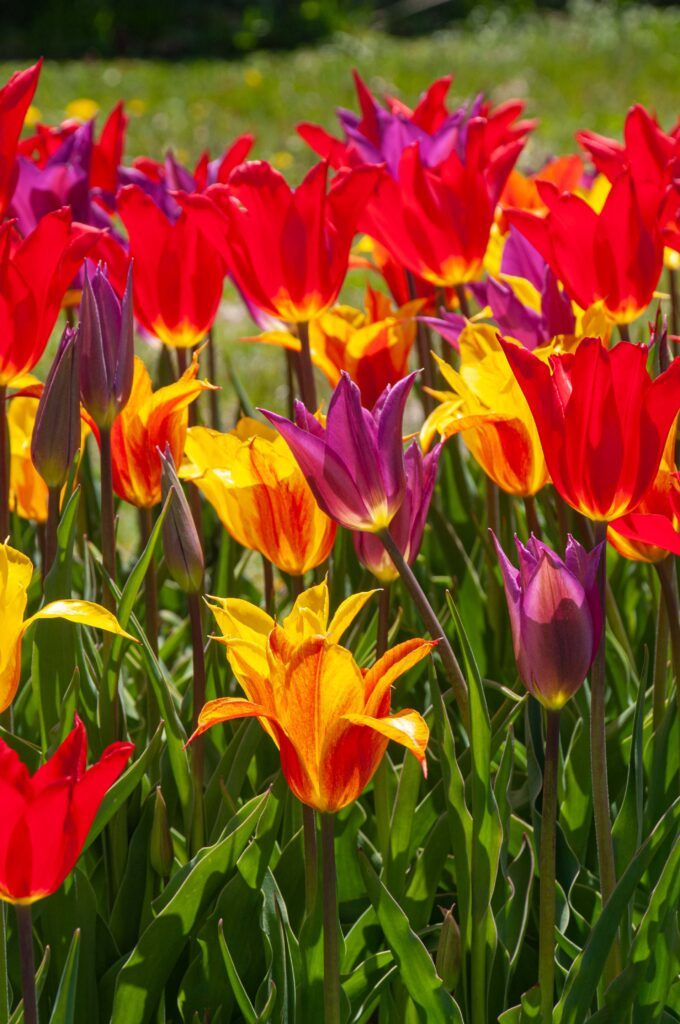405-445-7080
301 W. Reno
Oklahoma City, OK 73102
Crystal Bridge: Ticket Required
Open daily, 9am-5pm;
Sunday, 11am-5pm
Outdoor Grounds: Open daily 6am-11pm
405-445-7080
301 W. Reno
Oklahoma City, OK 73102
Crystal Bridge: Ticket Required
Open daily, 9am-5pm;
Sunday, 11am-5pm
Outdoor Grounds: Open daily 6am-11pm
12 tulip bulbs
1 bulb bookmark
Delta Dental toothbrush
Delta Dental floss kit
Planting space – pick one
Garden bed with full sun (at least 6 hours of direct sun a day)
Container
Soil
Water
Compost and mulch, recommended if planting outside


Make sure to read through all these instructions before beginning to ensure you are prepared for each step. Also check out the tips and tricks sheet for some more details.
*Note about fall planting for spring blooms*
The reason we plant spring-blooming bulbs in fall is because they need a long period of cool temperatures to spark the process that causes them to flower. This is nature’s way of preventing them from blooming during a mid-winter thaw. Planting bulbs outside gives them the natural cold weather they need before blooming. If planting bulbs in a container, you can also mimic this process by keeping the container someplace that will stay consistently cold but not below freezing, such as a garage or shed.
Prepare your planting area or container
If you’re planting outside:
Choose a garden area that gets full sun. Prepare the soil by loosening and mixing in compost for added nutrients and to improve drainage. This is especially important for heavy clay soil or ground that stays wet.
If planting in a container:
Make sure your container is at least 10 inches deep and has drainage holes. This will allow excess water to drain since bulbs don’t like to stay wet for too long. Fill your container with high-quality potting mix.
Plant your bulbs
Dig a narrow hole in your soil and use the ruler on the provided bulb bookmark to make sure it is the right depth. Tulip bulbs need to be planted 6 or 7 inches deep.
Plant one bulb in the hole – pointy end up and roots down – and cover with soil. Repeat for each bulb. It’s okay to plant bulbs close together.
Water your bulbs well after planting to settle them in. Remember, if your bulb was planted 7 inches deep into the soil, that water needs to soak in 7 inches deep to benefit the bulb.
Care during winter
If you’re planting outside:
Cover the planted area with mulch; this will keep the temperatures more consistent underground and help stop weeds from growing. Water again before the ground freezes — the wintertime is when they are developing roots. You can water again in late December or early January if it’s been an unusually dry winter and it is not freezing out.
If you’re planting in a container:
Keep the container someplace that will stay consistently cold but not below freezing, such as a garage or shed. While your bulbs will not need much water over the winter, they will need some moisture. If your bulbs are stored in a place where they will not get snowed on (and then watered by melting snow) or there has been a lack of precipitation over the winter, you will need to occasionally water your container – about once a month.

Ease into spring
If you’re planting outside:
Once bulbs start growing in spring, water once a week if you haven’t had any measurable rain — this is especially important while they’re flowering. Water once a week until foliage dies back.
If you’re planting in a container:
Once you begin to see foliage growing and the leaves get taller than a couple of inches, move the pot gradually into brighter light and eventually full sun. Water as needed, maybe even daily once flower buds show. It’s hard to overwater bulbs in the rush of spring, although make sure they never get water-logged.
Delta Dental smile care
Remember to brush your teeth for more than 2 minutes every day, morning and night.
For healthy teeth, floss once a day. It’s best to floss before brushing to remove plaque and loosen gunk from the tooth surface.
© 2024-2025 Myriad Botanical Gardens | Site by Hester Designs